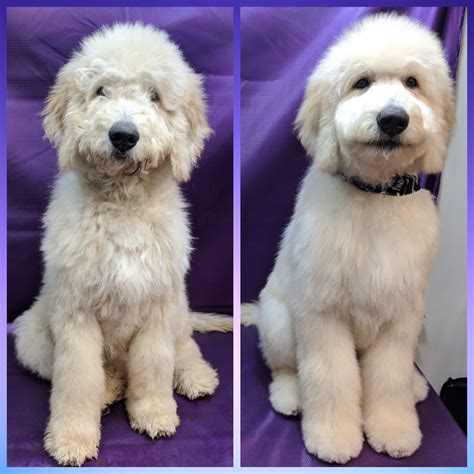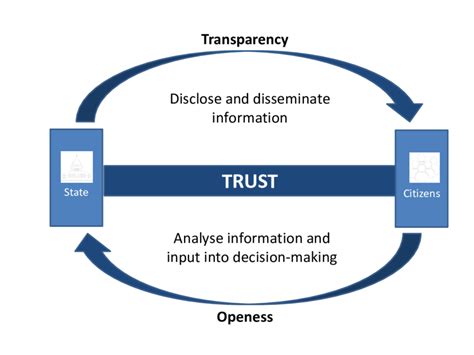
A Goldendoodle owner was shocked after a routine grooming appointment left her dog looking drastically different, sparking viral reactions and highlighting the potential for miscommunication and unexpected outcomes in pet grooming.
Allison Marks, the owner of the Goldendoodle named Winnie, experienced a grooming transformation she described as turning her “pup” into a “papa,” documenting the drastic change on TikTok, where it quickly gained widespread attention. Marks had requested a trim for Winnie but was surprised to see her dog shaved down to a very short haircut, altering her appearance significantly. The video showcasing Winnie’s transformation has garnered millions of views, likes, and comments, becoming a focal point for discussions about pet grooming expectations, communication with groomers, and the subjective nature of aesthetic preferences in pet care.
Marks recounted her experience, explaining that she took Winnie to the groomer for what she thought would be a light trim. “I took Winnie in for a trim…and picked up a completely different dog,” she posted, emphasizing the unexpected nature of the transformation. The before-and-after photos and videos clearly illustrated the stark difference in Winnie’s appearance, fueling the online debate.
The incident underscores the importance of clear communication between pet owners and groomers. Grooming preferences can vary widely, and misunderstandings about the desired length, style, and overall look are not uncommon. Pet grooming is a service industry that relies heavily on understanding the client’s vision, and when that vision is not effectively conveyed or interpreted, the results can lead to dissatisfaction and surprise, as seen in Winnie’s case.
The online reaction to Winnie’s grooming transformation has been varied. Many users expressed amusement and disbelief, commenting on the dramatic change in Winnie’s appearance. Others shared their own grooming horror stories, creating a sense of shared experience and community around the topic. Some comments focused on the importance of being specific with groomers about desired haircuts and the need to provide visual examples whenever possible. Conversely, some groomers weighed in, explaining the challenges they face in interpreting client requests and the potential reasons why a dog might need to be shaved down, such as matting or skin issues.
The incident with Winnie highlights the complexities of pet grooming. While some owners may view grooming as purely cosmetic, it also serves important health and hygiene purposes. Regular grooming can help prevent matting, which can lead to skin irritation and infection. It also allows groomers to identify potential health problems, such as lumps, bumps, or skin conditions, that might otherwise go unnoticed.
However, aesthetic preferences play a significant role in how owners choose to groom their pets. Popular breeds like Goldendoodles are often groomed in specific styles that emphasize their fluffy, teddy-bear-like appearance. When a groomer deviates from these established styles, even if unintentionally, it can lead to disappointment and a feeling that the pet’s unique character has been altered.
To avoid similar situations, experts recommend that pet owners take several steps to ensure clear communication with their groomers. First, they should schedule a consultation before the grooming appointment to discuss their preferences and expectations in detail. Providing visual examples, such as photos of the desired haircut, can be particularly helpful. Owners should also be prepared to discuss any specific concerns or issues they have with their pet’s coat or skin.
Furthermore, it is important to establish a relationship with a groomer who understands the owner’s preferences and is willing to listen to their concerns. Finding a groomer who is knowledgeable about the breed and its specific grooming needs can also be beneficial. Ultimately, successful pet grooming relies on a collaborative partnership between the owner and the groomer, built on clear communication and mutual understanding.
The case of Winnie the Goldendoodle serves as a reminder that pet grooming is not just about aesthetics; it is also about communication, understanding, and the well-being of the animal. While the incident may have initially caused surprise and amusement, it has also sparked important conversations about responsible pet ownership and the role of grooming in maintaining a pet’s health and happiness. The widespread attention the incident has received underscores the emotional connection people have with their pets and the importance of ensuring their care is aligned with their individual needs and preferences.
The transformation of Winnie from a fluffy pup to a more streamlined dog sparked considerable debate about the responsibilities of pet owners in clearly articulating their grooming desires. It also highlighted the potential challenges groomers face in interpreting those desires, especially when dealing with breeds prone to matting or when specific instructions are not provided.
Beyond the immediate reaction and viral sensation, Winnie’s story raises broader questions about the pet grooming industry, the training and certification of groomers, and the role of consumer education in ensuring positive grooming experiences. It underscores the need for groomers to be not only skilled in their craft but also adept at communication and customer service. Furthermore, it highlights the importance of pet owners taking an active role in understanding their pet’s grooming needs and communicating those needs effectively to their chosen groomer.
The incident also prompted discussions about the subjective nature of beauty standards in pet grooming. While some owners may prefer a more natural, unkempt look, others may favor meticulously styled haircuts that conform to breed standards or popular trends. These differing preferences can create challenges for groomers, who must balance the owner’s aesthetic desires with the pet’s health and well-being.
In Winnie’s case, the dramatic transformation was largely attributed to a miscommunication about the desired length of the haircut. However, other factors, such as the condition of Winnie’s coat and the groomer’s assessment of her overall health, may have also played a role. Ultimately, the incident serves as a reminder that pet grooming is a complex process that requires careful consideration and clear communication from all parties involved.
The proliferation of social media has amplified stories like Winnie’s, allowing them to reach a wide audience and spark conversations about pet care practices. While these stories can be entertaining and humorous, they also have the potential to educate pet owners about the importance of responsible grooming and the need for clear communication with their groomers.
As the pet industry continues to grow and evolve, it is essential that pet owners stay informed about best practices in pet care, including grooming. By educating themselves and communicating effectively with their groomers, they can help ensure that their pets receive the care they need to stay healthy, happy, and looking their best.
In the wake of Winnie’s viral grooming mishap, pet owners are encouraged to proactively engage with their groomers, sharing detailed instructions and visual references to minimize the risk of misunderstandings. Grooming businesses are also being urged to enhance their communication protocols, offering thorough consultations and seeking confirmation at each stage of the grooming process. The incident serves as a powerful case study in the delicate balance between aesthetic preferences, practical grooming needs, and the critical role of communication in delivering satisfactory pet care services.
The long-term implications of Winnie’s experience are likely to extend beyond a single viral story. It is anticipated that the incident will prompt more pet owners to invest time in researching groomers, reading reviews, and seeking referrals from trusted sources. Moreover, there could be an increase in the demand for groomers who specialize in specific breeds or grooming styles, as owners seek out professionals with expertise in their pet’s unique needs. The broader impact is a heightened awareness of the importance of informed decision-making in pet care, empowering owners to take a more active role in ensuring their beloved companions receive the best possible treatment.
Furthermore, the incident shines a light on the emotional connection people have with their pets and how their physical appearance often reflects that bond. For many, a pet’s grooming is not just about hygiene; it’s an expression of their personality and a reflection of the owner’s care and attention. When grooming outcomes deviate significantly from expectations, it can evoke strong emotional reactions, underscoring the deep significance pets hold in their owners’ lives.
The response from the grooming industry will also be crucial. It is likely that professional organizations will use Winnie’s story as a teaching tool, emphasizing the importance of active listening, clear communication, and empathetic customer service. Grooming schools may also incorporate case studies like this into their curriculum, preparing future groomers to navigate the complexities of client expectations and deliver results that meet both aesthetic and practical needs. The aim is to foster a culture of continuous improvement within the industry, ensuring that grooming experiences are positive and fulfilling for both pets and their owners.
The incident with Winnie, although initially humorous, has sparked a meaningful dialogue about pet care standards, communication best practices, and the significance of pets’ appearance in the context of their owners’ affection. As the story continues to resonate across social media platforms, it serves as a constant reminder of the need for attentiveness, clarity, and a deep understanding of the human-animal bond in all aspects of pet care, particularly grooming.
Moreover, the situation underscores the varying levels of regulation within the pet grooming industry. Unlike some professions, pet grooming often lacks standardized licensing or certification requirements, which can lead to inconsistencies in training and service quality. Winnie’s experience may prompt discussions about the need for greater regulation to ensure that all groomers possess the necessary skills and knowledge to provide safe and effective care. This could involve the establishment of national standards, mandatory training programs, and ongoing professional development requirements.
Another aspect worth considering is the potential impact on the mental health of pets during grooming procedures. Some pets may experience anxiety or stress when being groomed, especially if they are not accustomed to being handled or if they have had negative experiences in the past. Groomers have a responsibility to prioritize the well-being of the animals in their care, using gentle techniques, positive reinforcement, and creating a calm and comfortable environment. In Winnie’s case, it is important to ensure that she is not traumatized by the experience and that she continues to associate grooming with positive interactions.
The discussion surrounding Winnie’s grooming transformation also touches upon the broader issue of breed-specific grooming needs. Different breeds have different coat types, grooming requirements, and sensitivities. Goldendoodles, in particular, are known for their curly, hypoallergenic coats, which require regular brushing and trimming to prevent matting. Groomers who specialize in Goldendoodles are likely to have a deeper understanding of their unique needs and may be better equipped to deliver satisfactory results.
In the long run, Winnie’s story is likely to become a cautionary tale for pet owners, groomers, and the pet industry as a whole. It underscores the importance of proactive communication, responsible grooming practices, and a deep understanding of the human-animal bond. By learning from this experience, all parties can work together to ensure that future grooming experiences are positive, fulfilling, and beneficial for both pets and their owners.
The attention garnered by Winnie’s grooming mishap also brings into focus the role of ethical considerations in pet grooming. Groomers have a responsibility to prioritize the health and well-being of the animals under their care, avoiding any practices that could cause harm or distress. This includes using safe and gentle techniques, avoiding excessive shaving or cutting, and being mindful of the animal’s comfort level. Ethical grooming also involves being transparent with pet owners about any potential risks or complications associated with a particular grooming procedure.
In addition, the incident highlights the importance of cultural sensitivity in pet grooming. Different cultures may have different expectations and preferences when it comes to grooming their pets. Groomers who are aware of these cultural differences can better tailor their services to meet the needs of their diverse clientele.
Moreover, Winnie’s experience underscores the need for ongoing education and training in the pet grooming industry. Grooming techniques and products are constantly evolving, and groomers must stay up-to-date on the latest advancements to provide the best possible care. Continuing education can help groomers improve their skills, learn new techniques, and stay informed about industry best practices.
The saga of Winnie the Goldendoodle’s grooming transformation serves as a compelling reminder of the multifaceted nature of pet care. It encompasses not only the physical aspects of grooming but also the emotional, ethical, and cultural dimensions. By addressing these various aspects, pet owners, groomers, and the pet industry as a whole can work together to create a more positive and enriching experience for all animals.
The widespread attention on Winnie’s story has also sparked discussions on the potential for digital tools to enhance communication in the pet grooming process. For instance, mobile apps or online platforms could facilitate the sharing of visual references, detailed grooming instructions, and real-time updates between pet owners and groomers. These tools could also incorporate features such as appointment scheduling, payment processing, and customer feedback mechanisms, streamlining the overall grooming experience and fostering greater transparency.
Furthermore, the incident highlights the potential for artificial intelligence (AI) to play a role in pet grooming. AI-powered tools could be used to analyze pet coat types, assess grooming needs, and recommend appropriate grooming techniques. AI could also assist groomers in identifying potential health issues, such as skin conditions or parasites, based on visual analysis of the pet’s coat.
The evolving landscape of pet technology presents numerous opportunities to improve the pet grooming experience and ensure that pets receive the best possible care. By embracing these innovations, the pet industry can enhance communication, streamline processes, and ultimately create a more satisfying experience for both pets and their owners.
Winnie’s story also underscores the importance of pet insurance in covering unexpected costs associated with pet care, including grooming-related issues. While pet insurance typically does not cover routine grooming procedures, it may cover medical expenses arising from grooming accidents or complications, such as skin infections or injuries. Pet owners who have pet insurance may be able to mitigate some of the financial burden associated with unexpected grooming-related issues.
In addition, the incident highlights the need for groomers to carry professional liability insurance to protect themselves against potential claims of negligence or malpractice. This type of insurance can help cover the costs of legal defense, settlements, or judgments arising from grooming-related incidents.
As the pet industry continues to grow and evolve, it is essential for pet owners and groomers to understand the importance of insurance coverage in protecting themselves against potential financial risks. By having adequate insurance in place, they can help ensure that they are prepared for unexpected events and can continue to provide the best possible care for their pets.
Finally, the story of Winnie the Goldendoodle’s grooming transformation serves as a reminder of the enduring power of social media to shape public opinion and influence consumer behavior. The viral nature of Winnie’s story has demonstrated the potential for social media to amplify both positive and negative experiences in the pet industry, and it underscores the importance of businesses actively monitoring their online reputation and responding to customer feedback in a timely and professional manner.
Social media can also be a valuable tool for pet owners seeking information, advice, and recommendations on pet care services. By engaging with online communities and sharing their experiences, pet owners can help each other make informed decisions and find the best possible care for their beloved companions.
As social media continues to evolve, it will undoubtedly play an increasingly important role in shaping the pet industry and influencing the way pet owners interact with pet care providers. Businesses that embrace social media and leverage its power to connect with customers, build relationships, and provide valuable information will be well-positioned to succeed in the ever-changing pet care landscape.
Frequently Asked Questions (FAQs)
-
What happened to Winnie the Goldendoodle?
Winnie the Goldendoodle underwent a grooming appointment that resulted in a drastically shorter haircut than her owner, Allison Marks, anticipated. Marks described the transformation as Winnie going from a “pup” to a “papa” and shared the experience on TikTok, where it went viral.
-
Why did Winnie’s haircut turn out so different from what was expected?
The primary reason appears to be a miscommunication between the owner and the groomer regarding the desired length and style of the haircut. The owner’s vision for the grooming may not have been effectively conveyed or understood by the groomer. Factors such as matting or the dog’s coat condition could have also influenced the groomer’s decision to cut the hair shorter.
-
What can pet owners do to avoid similar grooming mishaps?
To prevent grooming disappointments, pet owners should:
- Schedule a consultation with the groomer before the appointment to discuss preferences in detail.
- Provide visual examples, such as photos of the desired haircut.
- Be specific about the desired length, style, and any concerns about the pet’s coat or skin.
- Establish a relationship with a groomer who understands their preferences and is willing to listen to their concerns.
- Ask questions and clarify any uncertainties before the grooming begins.
-
What are the health and hygiene benefits of regular pet grooming?
Regular grooming is not just about aesthetics; it provides several health and hygiene benefits, including:
- Preventing matting, which can lead to skin irritation and infection.
- Allowing groomers to identify potential health problems, such as lumps, bumps, or skin conditions.
- Removing dirt, debris, and parasites from the coat.
- Maintaining healthy skin and coat.
- Promoting overall hygiene and well-being.
-
What are the responsibilities of pet groomers in ensuring positive grooming experiences?
Pet groomers have several responsibilities, including:
- Communicating effectively with pet owners to understand their preferences and expectations.
- Providing safe and gentle grooming techniques.
- Prioritizing the health and well-being of the animals in their care.
- Being transparent about any potential risks or complications associated with a grooming procedure.
- Staying up-to-date on the latest grooming techniques and best practices.
- Maintaining a clean and comfortable grooming environment.









